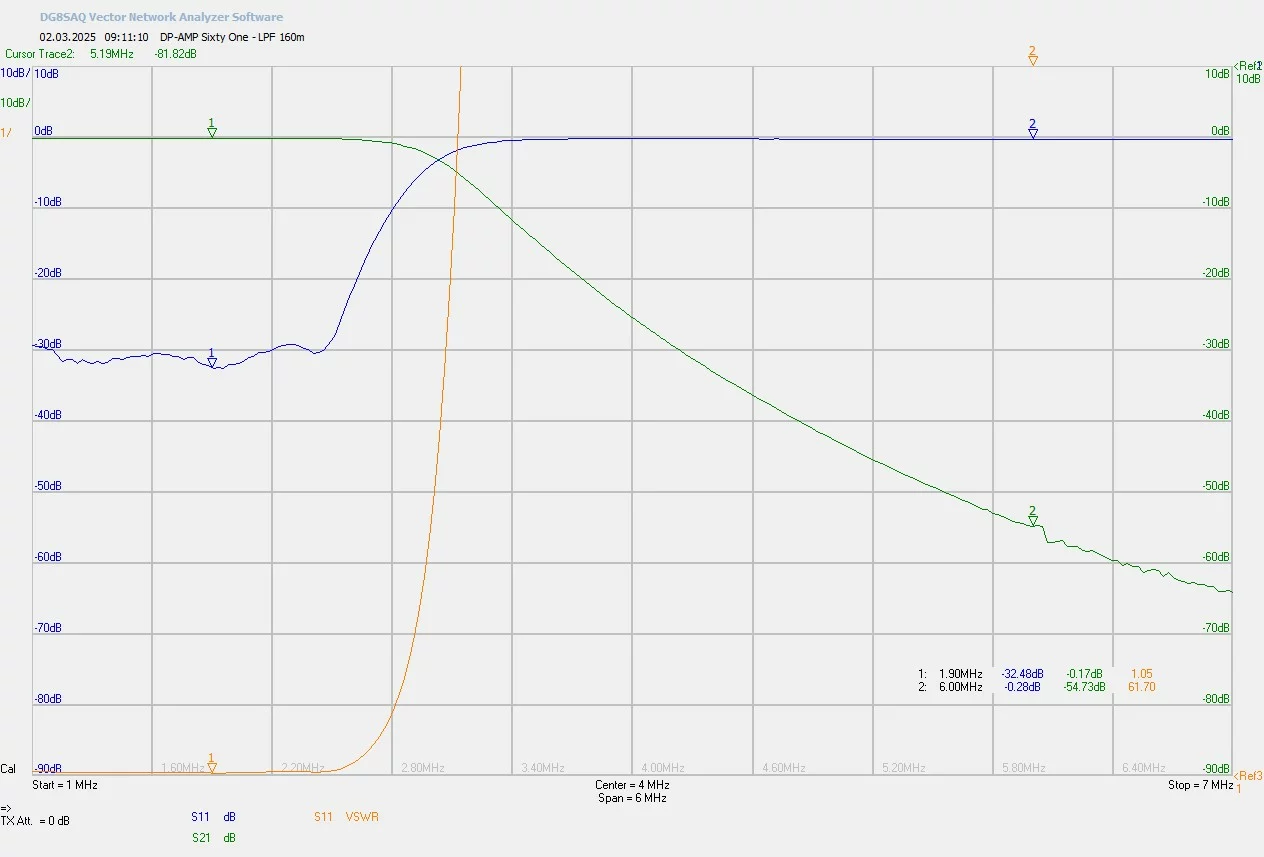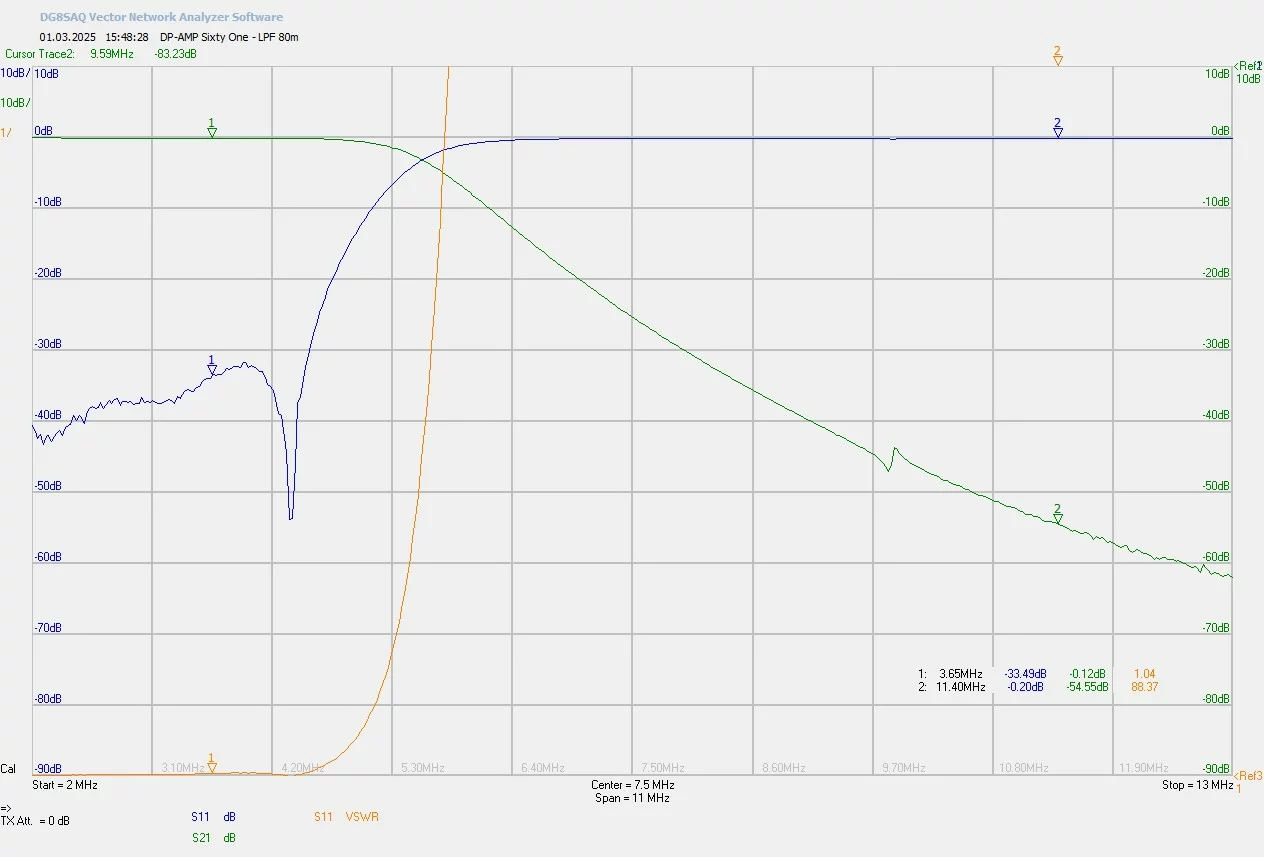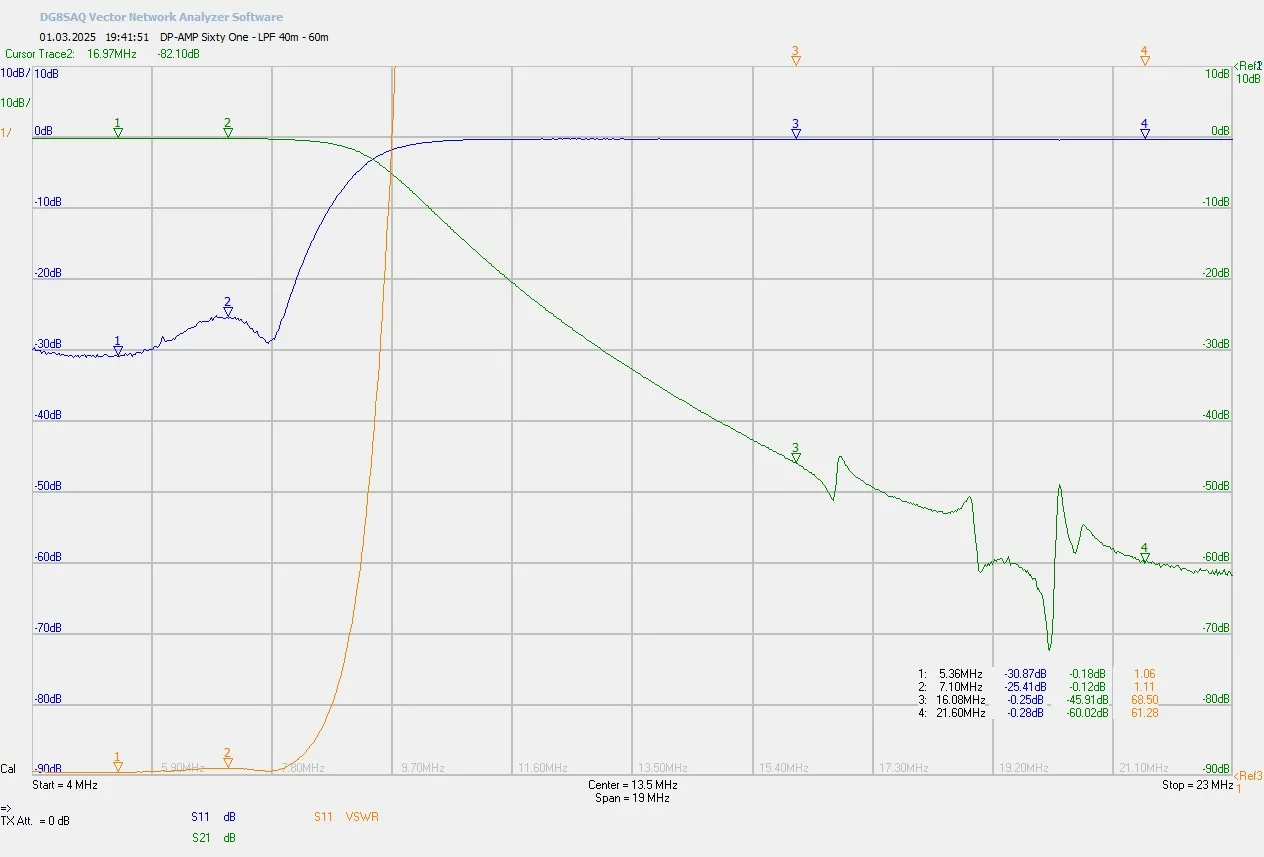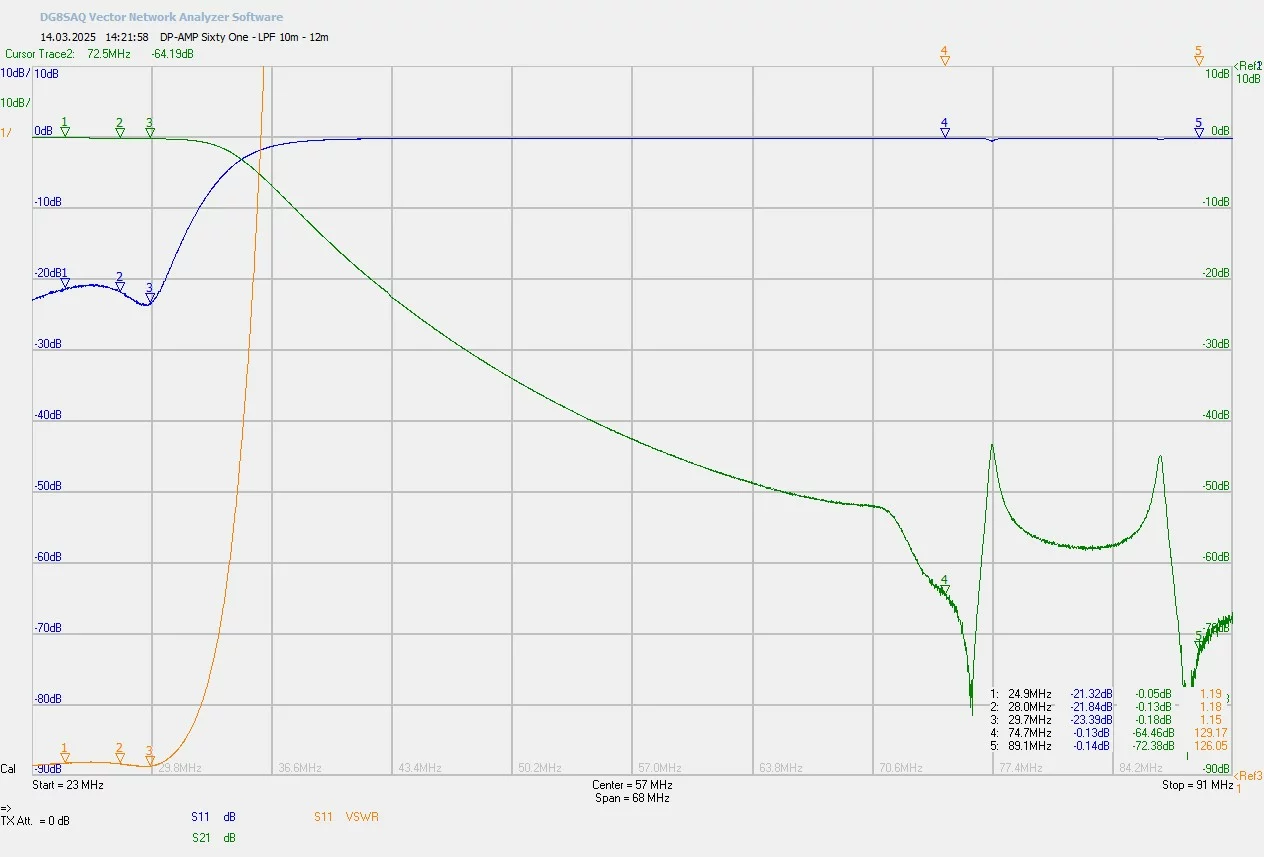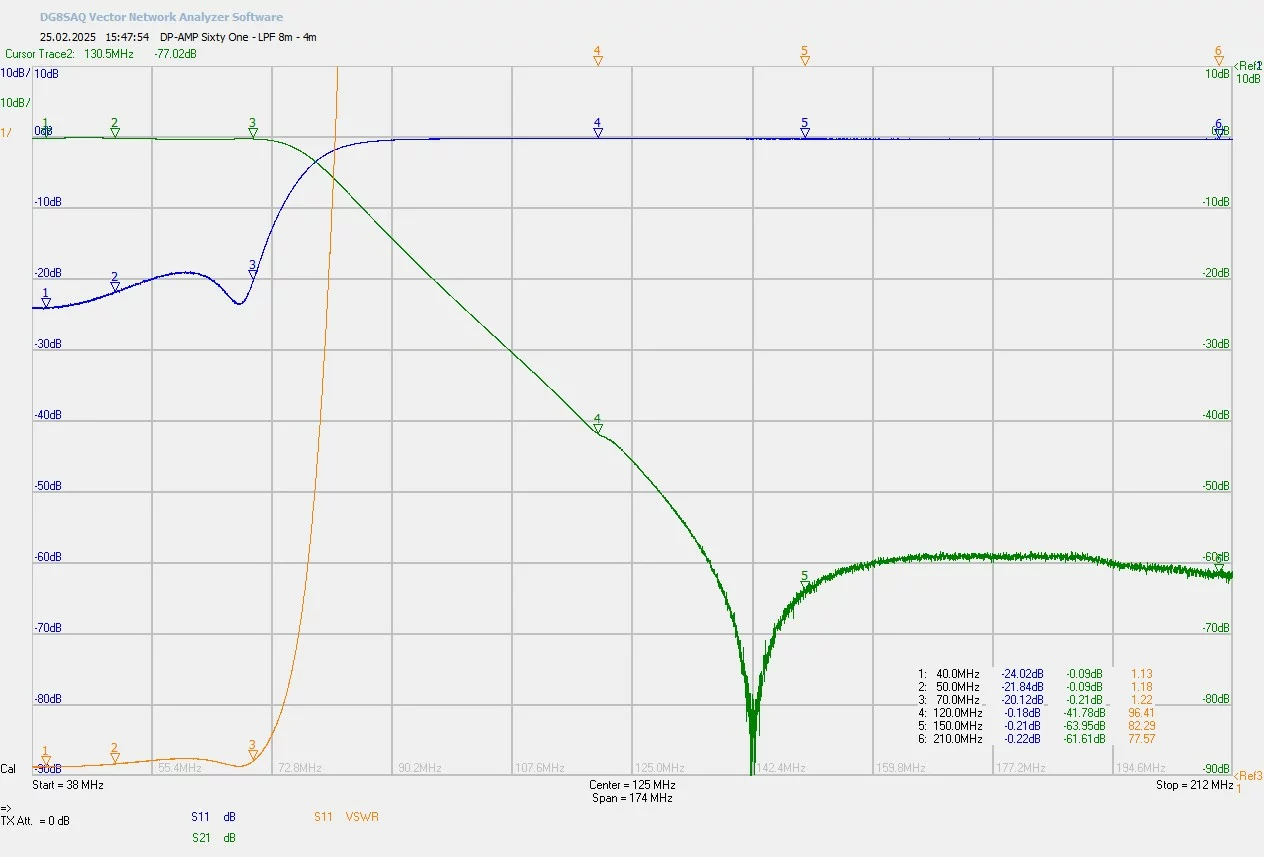DP-AMP Sixty One LPF Module
DP-AMP Sixty One Lowpass Filter
The lowpass filter was completely redeveloped.
The wired capacitors were no longer available and I had to
switch to SMD.
To further attenuate the sub-bands of the individual filters, I
switched from a 5th order Chebyshev filter to a 7th order one.

In order to remain future-proof, the 40 MHz (8m) band and the
70 MHz (4m) band have also been considered.
There are now 14 bands available:
160m / 80m / 75m / 60m / 40m / 30m / 20m / 17m / 15m /
12m / 10m / 8m / 6m / 4m
As always, the RX/TX switching is implemented on the lowpass filter and does not have to be implemented separately.
As you can see, the lowpass filter works very well and suppresses the resulting harmonics far better than required by the FCC. The FCC requires -43 dBc, i.e. 43 dB less in relation to the carrier. This is always met and the 3rd harmonic is already 10 dB lower at the filter input. You can therefore read off the value and add another 10 dB to get the actual suppression of the 3rd harmonic.
Example: Transmitter 15m, 60 dBm (1000W)
3rd harmonic before the filter 50 dBm (-10 dBc)
Filter attenuation 52.56 dB
Total attenuation compared to the carrier (dBc) = - 62.56 dBc
Required by FCC -43 dBc
HF range from 1.7 MHz to 35 MHz -40 dBc
VHF/UHF/SHF range from 50 MHz to 1000 MHz -60 dBc
This means that only -12.56 dBm (0.055 mW) of a good 50 dBm (100W) of the third harmonic is emitted after the filter.
From 50 MHz, the 3rd harmonic must be suppressed by at least 60
dBc.
With a good -71 dBc, this requirement has also been met very
well on 6m and 4m.
